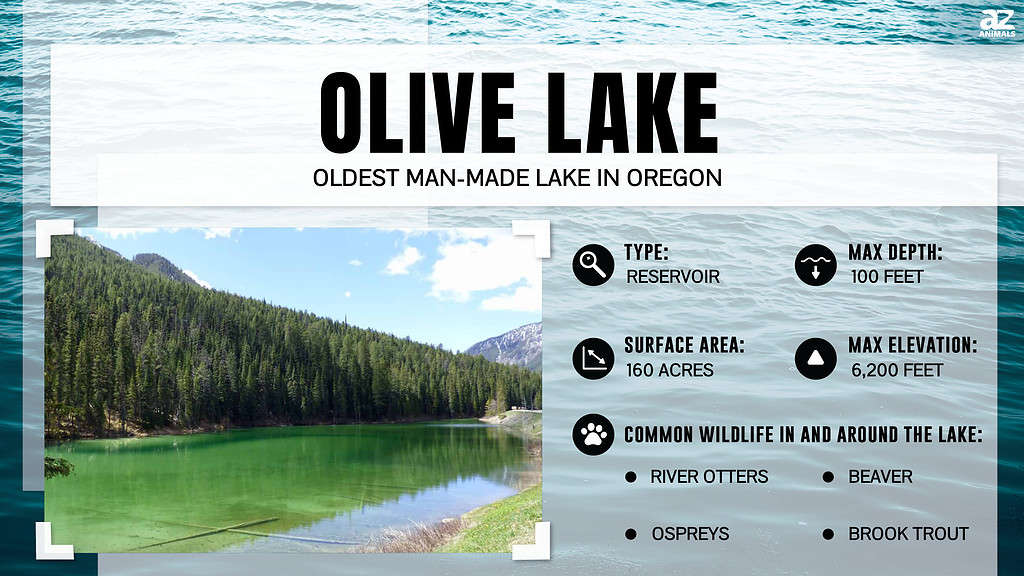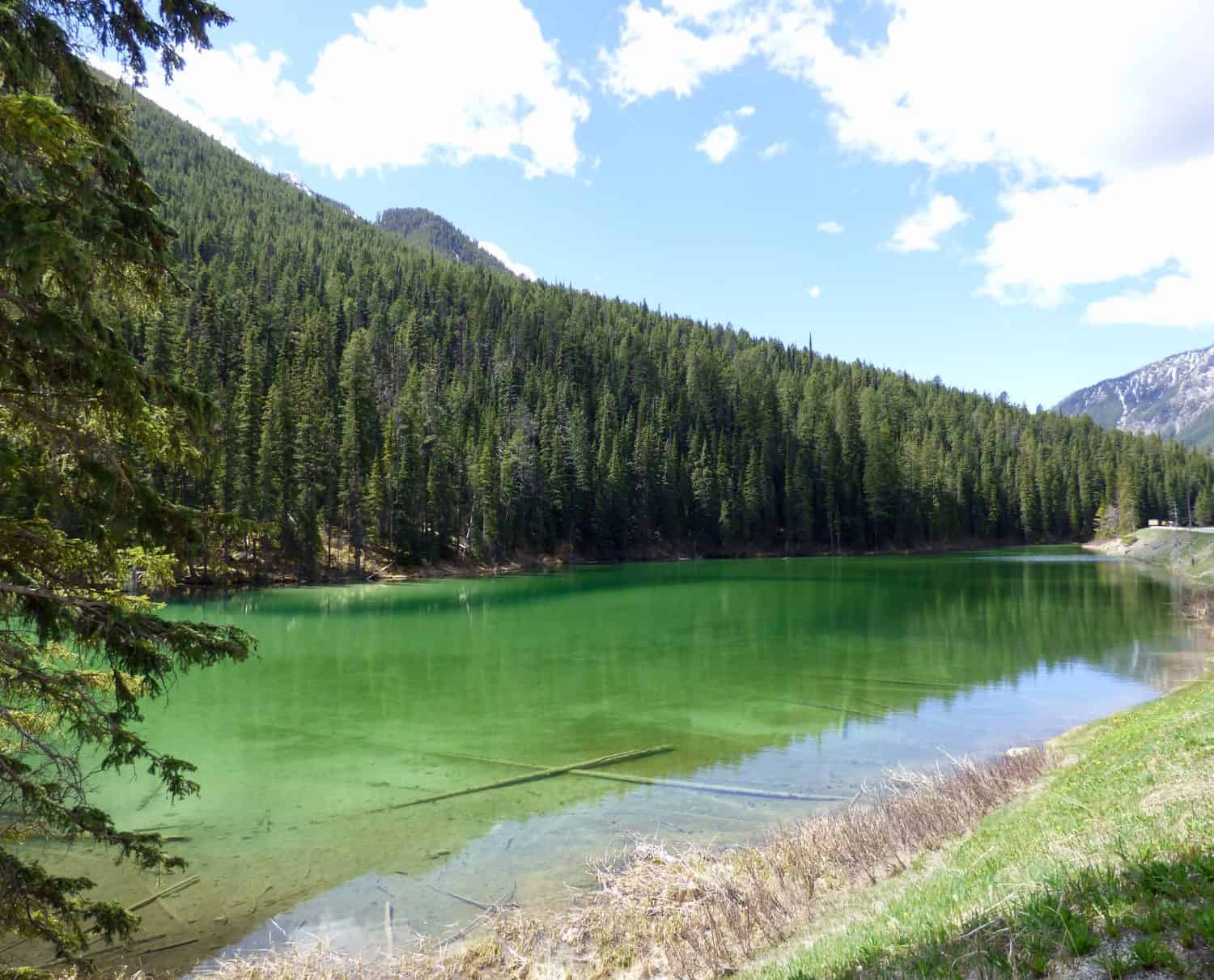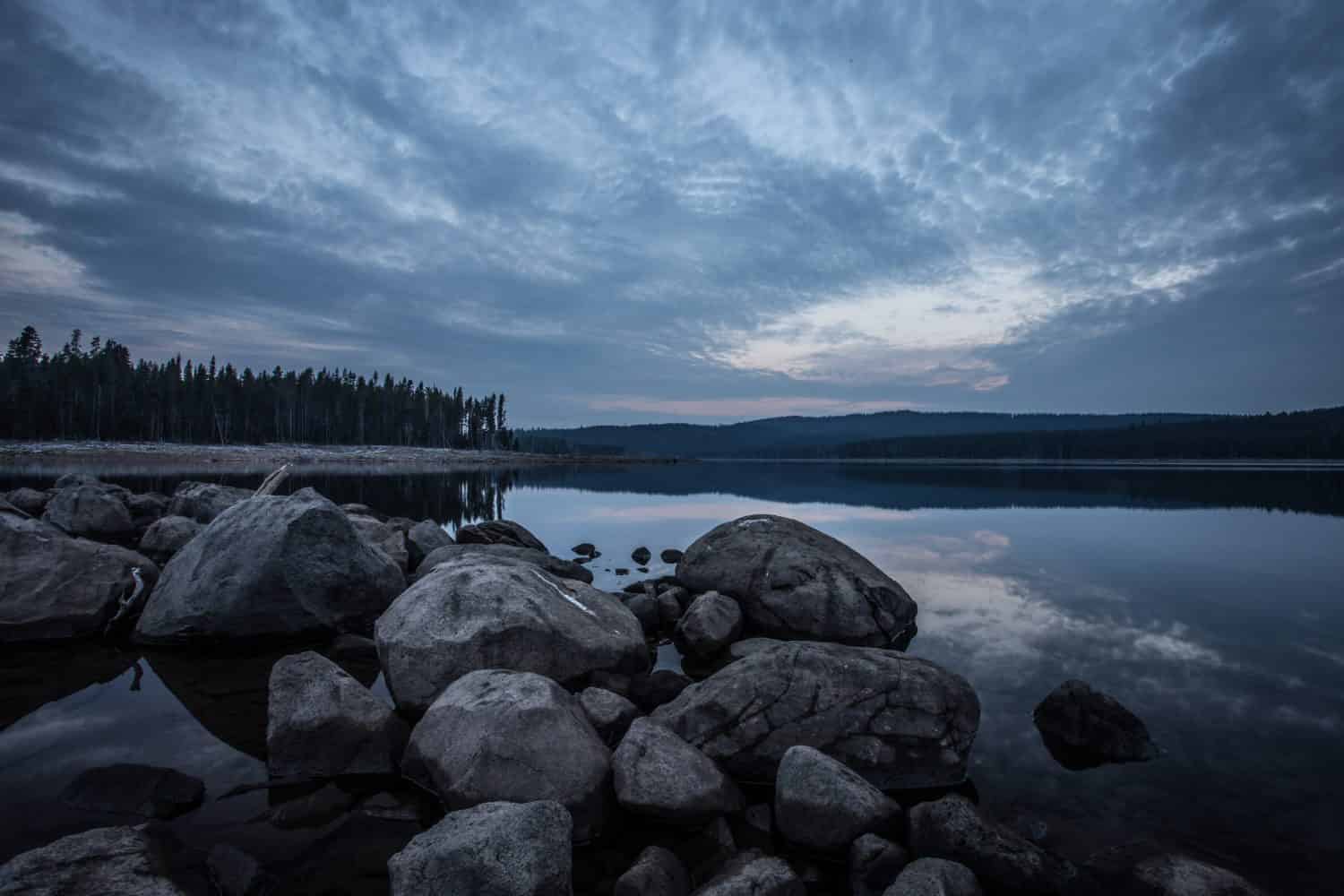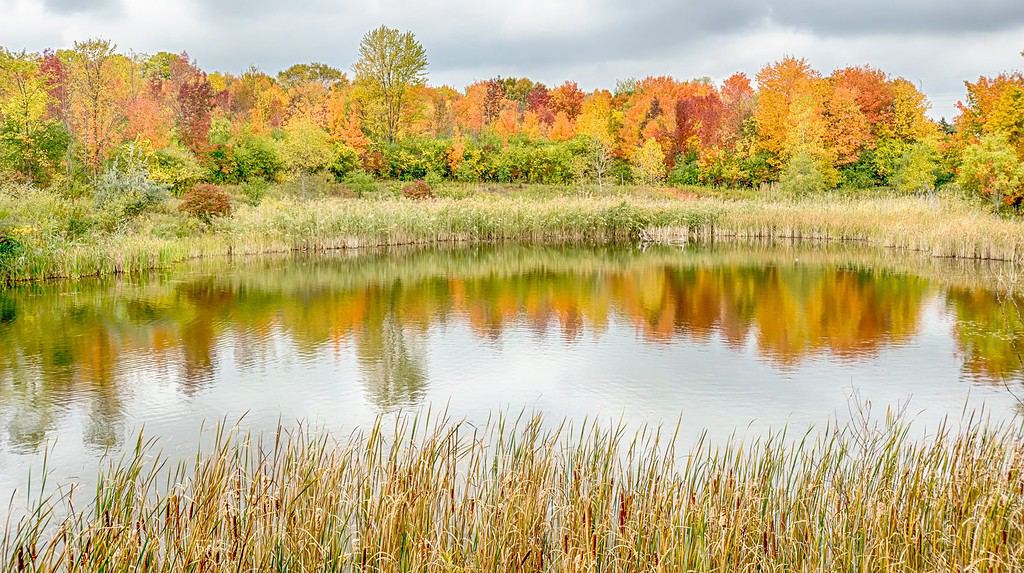Water, like food, is one of the necessities for survival that humanity has tried to cultivate and control for millennia. Since Arabian farmers began storing water for irrigation in craters formed by extinct volcanoes 5,000 years ago, humans have created man-made lakes. Oregon admitted to the United States in 1859, has had a shorter history, but water control has been essential to supporting a growing population. What is the oldest man-made lake in Oregon? Continue reading to find out.

Man-Made Lakes
Man-made lakes, also known as reservoirs, are created to supply drinking water, produce energy, control flooding, and provide water for agriculture. They are also popularly used for recreational purposes such as boating, swimming, and fishing.
These controlled water sources are typically created by damming a river or smaller stream. This process is usually achieved by constructing a concrete dam, a dike, or an excavated earthen wall. In addition to water from the stream or river, the reservoir will absorb rain, snow, and runoff from the surrounding watershed.

Reservoirs like this are created through the construction of dams. What is the oldest man-made lake in Oregon?
©U.S. Army Corps of Engineers, photographer not specified or unknown / Public domain, via Wikimedia Commons – License
Lakes Vs. Ponds
Bodies of water in Oregon include lakes and ponds. Some reservoirs are little more than an irrigation pool for a ranch or farm. Since this article is about man-made lakes, it would be helpful to identify the differences between a lake and a pond. For the sake of classification, we will define a pond as a small body of water with no outlet and a depth of less than 20 feet deep. Surface area limits for ponds have been described as anywhere up to 200 acres, though some, like the NOAA, have defined the upper limit for a pond as 1 acre. Lakes are impacted by weather, showing wave activity, while ponds only exhibit occasional ripples.
Oldest Man-Made Lake in Oregon

Olive Lake is the oldest artificial lake in Oregon.
©Linda Richardson/Shutterstock.com
Of the dammed reservoirs larger than a pond, the oldest man-made lake in Oregon is Olive Lake. Olive Lake Dam was created in 1907 by a local mine to provide water for hydroelectric power at the Fremont Powerhouse over 5 miles away. The dam, which raised water levels by 35 feet, was a timber crib dam created by stacking logs (log cabin style) and backfilling them with earth. The lake’s surface area is about 160 acres, and it reaches an impressive depth of 100 feet.
What Is There To Do at Olive Lake?
Olive Lake sits in Umatilla National Forest, with many trails and views surrounding it. To the south and the east, you will find overlooks from Vinegar Hill and the Vinegar Hill-Indian Rock Scenic Area. Hunting is a popular activity in the surrounding forest. The Lost Creek Trailhead is one of many in the area available for hiking. Olive Lake Campground provides camping, swimming, boating, and fishing opportunities.
What Wildlife Lives Around Olive Lake?
An alert birdwatcher in the lake’s woods may see osprey, spotted sandpipers, and olive-sided flycatchers. The waters of the lake and inflowing streams are popular with river otters and American beavers. Anglers can expect rainbow, cutthroat, and brook trout, as well as kokanee salmon.
Olive Lake on a Map
Olive Lake is 37 miles west of Baker City and 58 miles south of Pendleton. It is situated in the Umatilla National Forest in northeastern Oregon.
Other Old Man-Made Lakes in Oregon
Oregon has several man-made lakes of nearly the same age as Olive Lake. The United States Bureau of Reclamation was formed in 1902 and began several water management projects across the U.S. soon after.
Cold Springs Reservoir
Cold Springs Reservoir, near the northern border of Oregon, was built in 1908. The 105-foot-high Cold Springs Dam impounds the Umatilla River. The reservoir provides irrigation for agriculture in the surrounding regions. It also overlaps with part of the Cold Springs National Wildlife Refuge.
Fourmile Lake

Some of the country’s cleanest drinking water comes from Fourmile Lake.
©R. Montgomery/Shutterstock.com
Fourmile Lake took a while to complete. In 1898, a company was established to provide irrigation options for the Rogue Valley. The project was completed in phases, but Fourmile Lake Dam was completed in 1922. The resulting lake has a surface area of 740 acres and a maximum depth of 170 feet.
Bull Run Lake
The water supply for Portland comes from the pristine Bull Run Lake near the border of Washington. The Bull Run River was so important that Presidents Benjamin Harrison and Theodore Roosevelt issued orders restricting public access to the lake. The dam was completed in 1922, though water was pumped out of the river to Portland as early as 1895.
Old Man-Made Pond in Oregon

Some man-made lakes are just ponds like this.
©Steve Lagreca/Shutterstock.com
Though large reservoir projects were being built in the early 1900s, industrious individuals built private ponds using earthen dams at the end of the 1800s.
Welch Reservoir
In 1890, a farmer in eastern Oregon, between Snake River and I-84, built an earthen dam to create a reservoir for irrigation. The Widman #2 dam holds back about .16 acres of water, known as the Welch Reservoir. It also provides a water source for livestock.
The photo featured at the top of this post is © Linda Richardson/Shutterstock.com
Thank you for reading! Have some feedback for us? Contact the AZ Animals editorial team.






